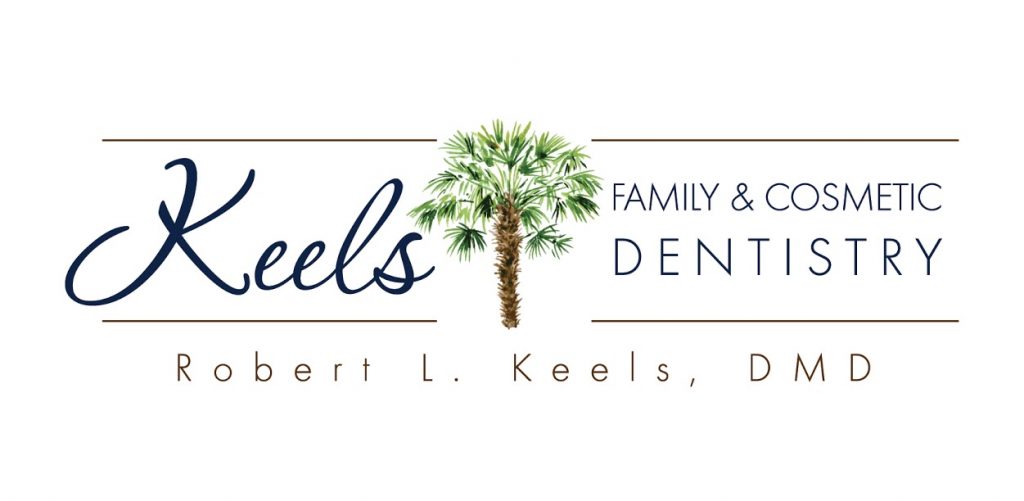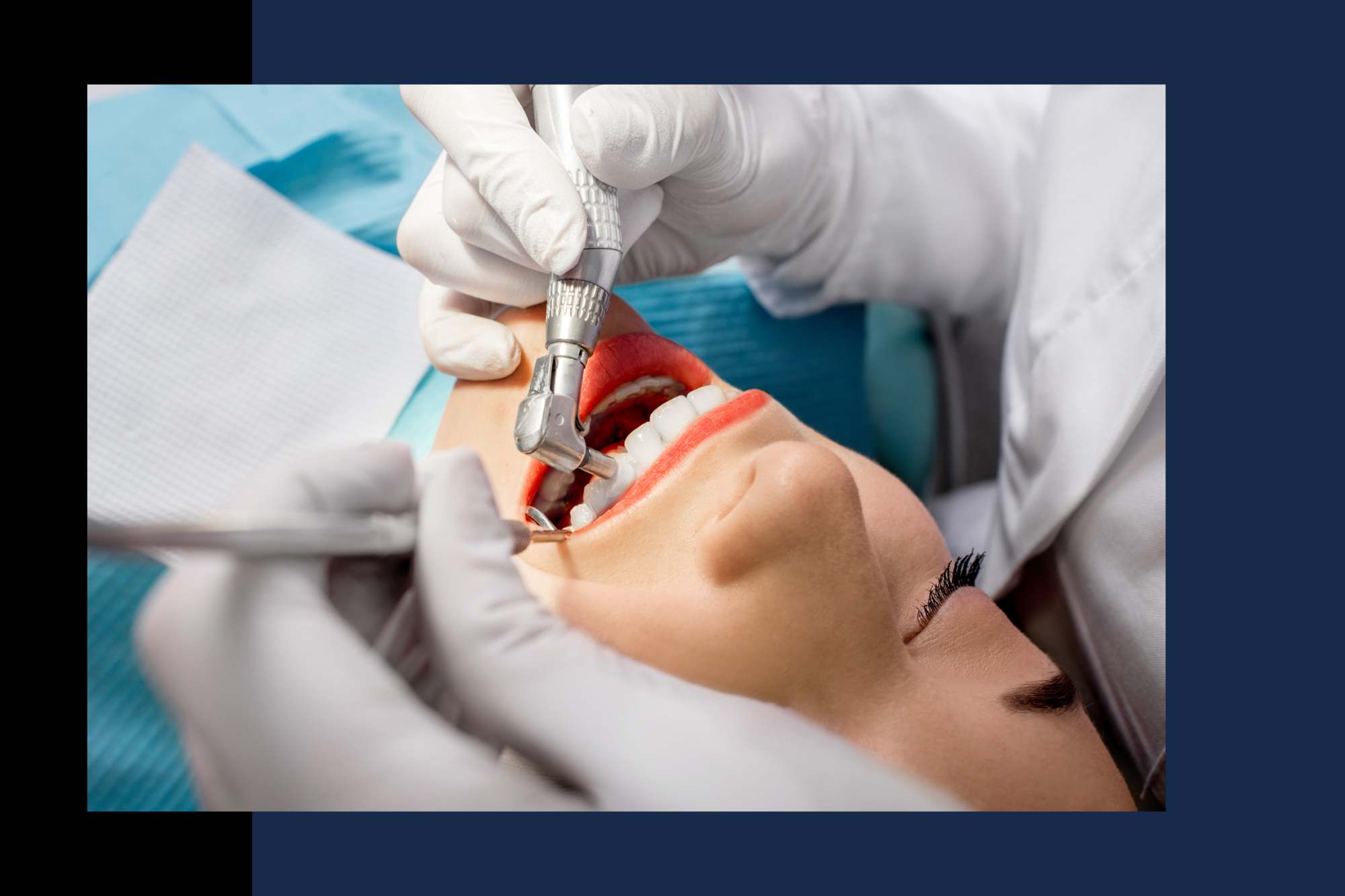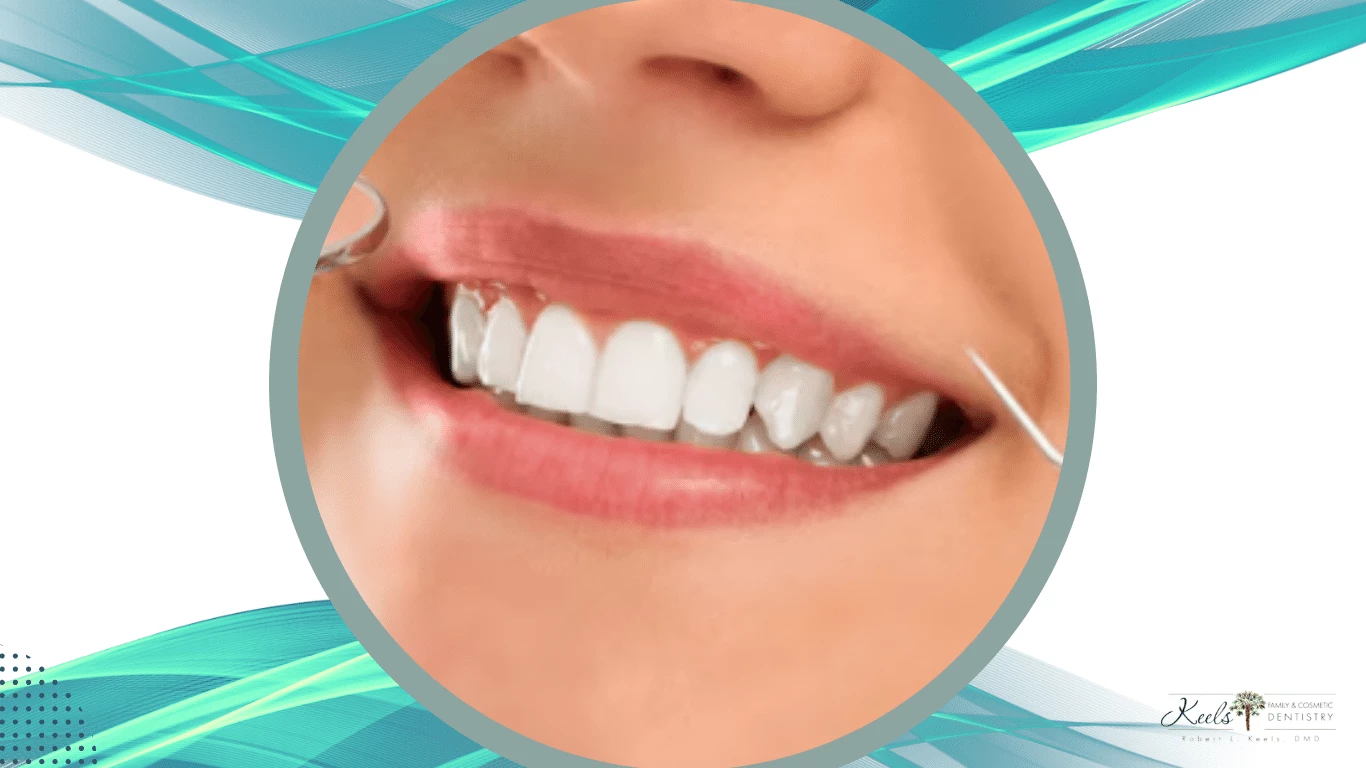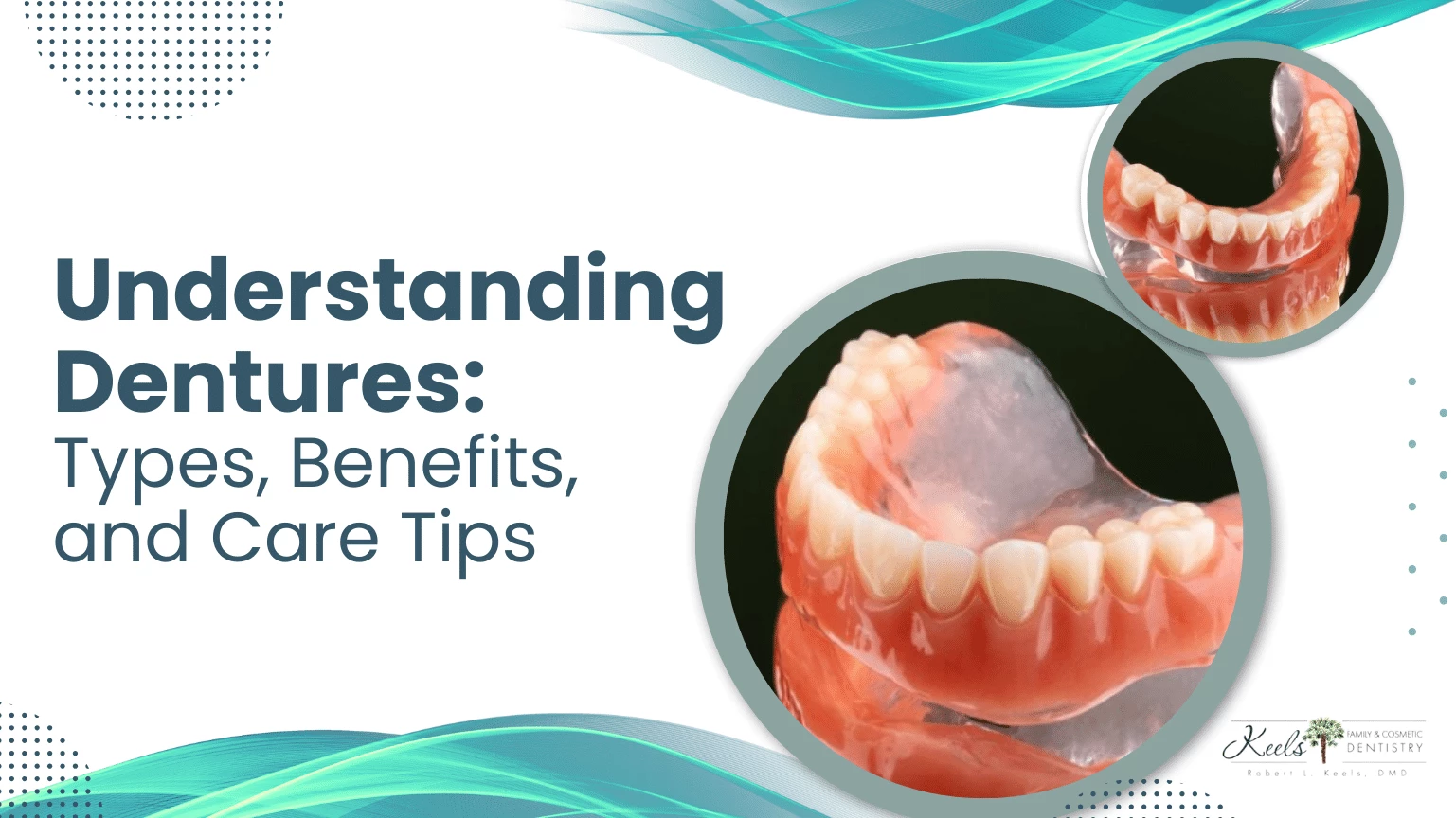Our general dentist in Duncan SC is a specialist who deals with the overall oral health of their patients. A general dentist is trained in taking x-rays of the mouth, diagnosing problems with or related to the teeth, and providing treatment based on these observations.
Among other things, they can treat cavities between your teeth and those outside your teeth, repair damaged teeth with fillings or veneers, provide you with a crown if necessary, or extract them if it is deemed fit. They can also shape and smooth your teeth for maximum comfort and provide treatments to correct jaw problems that may impact your mouth.
Our general dentist – Dr. Robbie Keels, DMD is qualified to place sealants on the molars of children, fill cavities, replace missing teeth structures with dentures or bridges if necessary, make crowns for adults and children to protect their teeth, create a more permanent solution if they are missing some of the molars, and provide services to aid in keeping patients’ teeth healthy (e.g. fluoride treatments).
Teeth Cleaning
Teeth cleaning, also known as dental prophylaxis or professional dental cleaning, is a preventive dental procedure performed by a dental hygienist or dentist to remove plaque, tartar, and stains from the surfaces of teeth. It is an essential part of maintaining good oral hygiene and overall dental health.
The teeth-cleaning process typically involves the following steps:
Physical Examination: Before starting the cleaning, the dental hygienist or dentist will visually examine your teeth and gums to assess their overall condition and identify any areas of concern.
Plaque and Tartar Removal: Plaque is a soft, sticky film that develops on the teeth due to the interaction of bacteria with food particles. If not removed regularly, plaque can harden into tartar (also called calculus), which cannot be removed by brushing and flossing alone. The dental professional uses specialized dental tools, such as scalers and curettes, to carefully and gently remove plaque and tartar from the tooth surfaces above and below the gum line.
Tooth Polishing: After the plaque and tartar are removed, the dental hygienist will use a gritty toothpaste-like material and a rotating polishing tool to polish the teeth. This process helps remove surface stains and makes the teeth smooth and shiny.
Flossing: The dental professional will floss between the teeth and around the gumline to remove all plaque and debris from these hard-to-reach areas.
Fluoride Treatment (Optional): In some cases, a fluoride treatment may be applied to the teeth to strengthen the enamel and provide additional protection against cavities.
The frequency of teeth cleaning appointments can vary based on individual dental needs, but it is generally recommended to have a dental cleaning every six months.
However, some individuals with specific dental conditions may require more frequent cleanings. Teeth cleaning is crucial in preventing dental issues such as cavities, gum disease, and bad breath. It also helps to maintain a bright and healthy smile. Along with regular brushing and flossing at home
At Keels Family & Cosmetic Dentistry, we have a team of experienced dental hygienists who are experts in the field of oral care. During your teeth cleaning appointment, our hygienists will conduct a thorough examination of your teeth and gums to identify any potential concerns. They will then skillfully use specialized dental tools to gently remove plaque and tartar from all surfaces of your teeth, including those hard-to-reach areas.
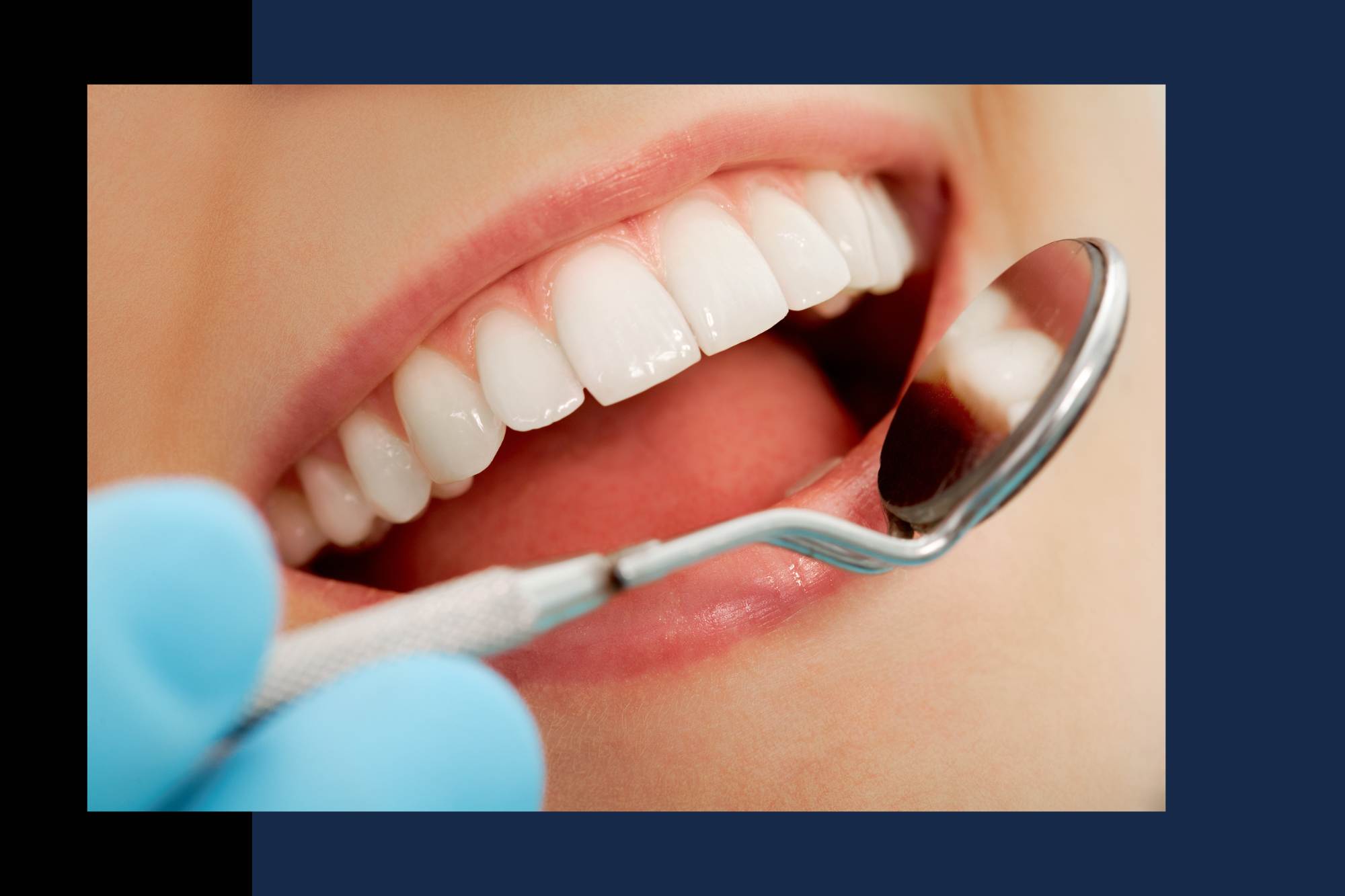
Tooth Fillings
Tooth fillings, also known as dental fillings, are dental restorations used to repair and restore teeth that have been damaged by decay or cavities. When a tooth develops a cavity, it creates a small hole or void in the tooth structure. The dental filling is used to fill this space, preventing further decay and restoring the tooth’s normal function and appearance.
The process of getting a tooth filling typically involves the following steps:
- Diagnosis: During a dental examination, the dentist will inspect your teeth, and if they find any signs of decay or cavities, they will recommend getting a dental filling.
- Anesthesia: Before the filling procedure begins, the dentist will administer local anesthesia to numb the area around the affected tooth. This ensures that you remain comfortable and pain-free during the procedure.
- Tooth Preparation: The dentist will use dental instruments to remove the decayed part of the tooth, creating a clean and stable space for the filling.
- Filling Material Selection: There are different types of dental filling materials available, such as amalgam (silver fillings), composite resin (tooth-colored fillings), ceramic, and gold. The choice of filling material will depend on factors like the location and size of the cavity, aesthetics, and your preferences.
- Filling Placement: Once the tooth is prepared, the chosen filling material is placed into the cavity in layers. Each layer is hardened using a special curing light. The dentist will shape and adjust the filling to ensure a comfortable bite and a natural appearance.
- Polishing: After the filling is placed, the dentist will polish it to smooth out any rough edges and give it a natural sheen.
Dental fillings are a highly effective and common dental treatment to restore teeth damaged by decay. They not only prevent further decay and infection but also help to restore the strength and functionality of the affected tooth. With proper oral hygiene and regular dental check-ups, dental fillings can last for many years.
At Keels Family & Cosmetic Dentistry, we understand that each patient has unique dental needs and concerns. That’s why we prioritize personalized dental care for every individual who walks through our doors. Your tooth filling will be tailored to your specific requirements, ensuring you receive the highest level of care possible.
Periodontal Treatment
Periodontal disease is a common condition that affects the gums, bones, and other supportive structures of the teeth. If left untreated it can lead to irreversible damage in the form of pocketing around the teeth, loss of supporting bone structure, and eventually tooth loss.
Fortunately, with proper periodontal treatment, this damage can be halted or even reversed. The primary goal of periodontal treatment is to control the infection and reduce the inflammation that causes pain and swelling in the gums. This can be achieved through a combination of professional cleanings, scaling, and root planing, antibiotics, and (in some cases) surgery.
Professional cleanings are designed to remove plaque and tartar build-up from around the teeth. This can be done with hand tools or ultrasonic instruments that use vibrations to loosen and remove bacteria and plaque deep within the gum pockets. During scaling and root planing, a special instrument is used to smooth the tooth root surfaces, thereby reducing areas where bacteria can accumulate.
Antibiotics can also be used to prevent infection in areas where deep cleaning and root planing are not possible. This could include topical or oral antibiotics, which can help to reduce inflammation and eliminate harmful bacteria. In more advanced cases of periodontal disease, surgery may be necessary to restore the health of the gums and surrounding structures. Surgery involves removing damaged tissue and bone in order to create a healthy environment for the teeth.
Wisdom Teeth Removal
Wisdom teeth removal, also known as third molar extraction, is a common dental procedure in which the third molars, commonly referred to as “wisdom teeth,” are removed from the back of the mouth.
These molars are the last set of teeth to emerge and typically appear in late adolescence or early adulthood, usually between the ages of 17 and 25.
Reasons for Wisdom Teeth Removal
- Insufficient Space: Often, the jaw does not have enough space to accommodate the wisdom teeth properly. As a result, they may become impacted (partially or fully trapped beneath the gum line) or grow in at an angle, causing potential problems.
- Impacted Wisdom Teeth: Impacted wisdom teeth can lead to various issues, such as pain, swelling, infection, and damage to adjacent teeth.
- Crowding: Wisdom teeth can exert pressure on the surrounding teeth, leading to crowding and misaligning dental arches.
- Tooth Decay and Gum Disease: Due to their location at the back of the mouth, wisdom teeth can be challenging to clean properly, making them more susceptible to tooth decay and gum disease.
- Cysts or Tumors: In some cases, cysts or tumors may form around impacted wisdom teeth, potentially causing damage to the jawbone or nearby teeth.
The Wisdom Teeth Removal Process
- Dental Examination: Before recommending wisdom teeth removal, the dentist or oral surgeon will conduct a thorough examination, which may include X-rays or other imaging to assess the position, size, and alignment of the wisdom teeth.
- Anesthesia: Wisdom teeth removal is typically performed under local anesthesia, which numbs the area around the wisdom teeth, making the procedure more comfortable and pain-free.
- Extraction: The dentist or oral surgeon will incision the gum tissue to access the wisdom tooth. If the tooth is impacted, a portion of the bone covering it may need to be removed to reach the tooth. The tooth is then extracted using specialized dental instruments.
- Stitches and Healing: The surgical site may be sutured after the extraction to promote proper healing. In most cases, dissolvable stitches are used. A gauze is placed over the extraction site to help control bleeding and promote clot formation.
- Recovery: Recovery after wisdom teeth removal may involve some discomfort and swelling, which can be managed with pain medications and following post-operative care instructions provided by the dentist or oral surgeon.
Potential Complications:
While wisdom teeth removal is a routine procedure, there can be potential complications, such as dry socket (a painful condition where the blood clot at the extraction site is lost), infection, or nerve injury. However, these complications are rare and can be minimized by following post-operative instructions and attending follow-up appointments.
Tooth Extraction
Tooth extraction, or dental extraction, is a procedure in which a tooth is removed from its socket in the jawbone. Tooth extraction may be necessary for various reasons, including severe tooth decay, gum disease, dental trauma, impacted wisdom teeth, crowding, or preparation for orthodontic treatment.
Types of Tooth Extraction
- Simple Extraction: This type of extraction is performed on visible teeth that are easily accessible and can be removed with dental forceps. Simple extractions are typically done under local anesthesia, and the dentist gently loosens the tooth before carefully removing it from the socket.
- Surgical Extraction: Surgical extractions are more complex and involve removing teeth that are not fully erupted, broken at the gum line, or impacted (partially or fully trapped beneath the gum line). Surgical extractions may require an incision in the gum tissue to access the tooth and may involve removing a small portion of bone surrounding the tooth.
The Tooth Extraction Process
- Dental Examination: Before recommending a tooth extraction, the dentist will conduct a thorough examination, which may include X-rays, to assess the condition of the tooth, its roots, and its surrounding structures.
- Anesthesia: The dentist will administer local anesthesia to numb the area around the tooth to ensure a pain-free procedure. For more complex extractions, the patient may receive general anesthesia or IV sedation to remain comfortable and relaxed during the procedure.
- Tooth Extraction: For a simple extraction, the dentist will use dental forceps to carefully loosen and remove the tooth from the socket. In the case of surgical extraction, an incision may be made to access the tooth, and the dentist or oral surgeon will remove the tooth using specialized dental instruments.
- Gauze Placement: After removing the tooth, the dentist will place gauze over the extraction site to control bleeding and promote clot formation.
- Healing and Recovery: The healing process after tooth extraction usually takes a few days to a week. Patients may experience discomfort, swelling, and slight bleeding at the extraction site. Pain medications and following post-operative care instructions from the dentist or oral surgeon can help manage these symptoms.
- Follow-Up Care: The dentist will provide post-operative instructions, which may include guidelines for oral hygiene, eating soft foods, avoiding certain activities, and attending follow-up appointments for proper healing and monitoring.
Tooth extraction is a common dental procedure to address various dental issues and maintain oral health. Suppose you are experiencing tooth pain, decay, or other dental problems. In that case, it is crucial to consult with a dentist for a comprehensive evaluation and appropriate treatment recommendations, which may include tooth extraction when necessary.
Root Canals
Root canals are a common endodontic procedure that help save teeth that have been severely damaged or infected. The procedure involves removing the nerve and pulp of the tooth, cleaning out the inside of the tooth, and then sealing it with a special filling material. After a root canal is performed, your dentist may recommend having a crown placed on top of the restored tooth for added strength and protection.
Root canals are generally successful, with many patients reporting that their treated tooth felt the same as a regular, healthy tooth after the procedure. Regular brushing and flossing habits, in addition to regular dental visits, can help protect your teeth from needing a root canal and other treatments in the future. With proper care and maintenance, your restored tooth can last you a lifetime.
Other endodontic treatments such as apicoectomies may be necessary for teeth with more serious damage or decay. An apicoectomy is a procedure that involves removing the root tip of the affected tooth and sealing it to prevent further infection in the surrounding area. This type of treatment often requires multiple visits for proper healing and success.
No matter the type of endodontic treatment you need, it is important to seek out a qualified and experienced endodontist who can provide the optimal care for your unique situation. At Keels Family & Cosmetic Dentistry, our team is here to offer exemplary root canal services.
Dental Exam
A dental exam, also known as a dental check-up or dental examination, is a routine dental appointment during which a dentist or dental hygienist evaluates and assesses the overall health of your teeth, gums, and mouth. Regular dental exams are essential for maintaining good oral health and preventing dental problems.
Importance of Regular Dental Exams
Regular dental exams are essential for several reasons:
- Early Detection of Dental Problems: Dental exams allow dentists to detect dental issues early on, when they are easier and less expensive to treat.
- Preventive Care: Dental cleanings during the exam help prevent tooth decay, gum disease, and other oral health problems.
- Oral Cancer Detection: Oral cancer screenings during dental exams can lead to early detection and timely treatment if any abnormalities are found.
- Maintenance of Oral Health: Regular dental exams play a significant role in maintaining good oral hygiene and overall dental health.
It is generally recommended to have a dental exam and cleaning every six months, though the frequency may vary based on individual dental needs and conditions. If you have specific dental concerns or experience any dental issues between regular exams, it is essential to schedule an appointment with your dentist promptly.
Call Keels Family & Cosmetic Dentistry now!
Do I Need A General Dentist?
You should consider going to a general dentist when you need to have your teeth examined by a professional for multiple reasons. General dentists are trained to deal with any issues that may arise in the mouth, including but not limited to cosmetic treatments, periodontal treatment, surgery, dental hygiene, dental fillings, crowns, or root canal therapy. If you have a toothache or need your teeth cleaned or teeth whitened, or looking for a new family dentist, Keels Family & Cosmetic Dentistry is here to serve you. Keels Family & Cosmetic Dentistry offers general dentistry services that focus on all aspects of dental care – cosmetic, dental fillings, porcelain crowns, root canal therapy, gum disease treatments, dentures, sealants – to keep your teeth healthy, beautiful, and strong. Contact Keels Family & Cosmetic Dentistry today to learn more about the various services we offer!
Why Choose Keels Family & Cosmetic Dentistry?
Make An Appointment
At Keels Family & Cosmetic Dentistry, we understand that people choose our practice for a multitude of reasons. Our prime location offers convenience to our valued patients, making it easy to schedule appointments and prioritize their oral health. The trust and satisfaction of our patients, who often refer friends and family, have solidified our reputation as a professional and caring dental office within our community. Our comprehensive services range from cosmetic dentistry to dental care for the entire family, ensuring that we meet the unique needs of every member. We work with various dental insurance plans to make quality care accessible. With flexible scheduling, a warm and welcoming atmosphere, state-of-the-art technology, and a commitment to patient education, we aim to provide not just dental services but also a comfortable and personalized experience. At Keels Family & Cosmetic Dentistry, we prioritize the health and well-being of our patients above all else, fostering a strong personal connection with each individual who walks through our doors.
